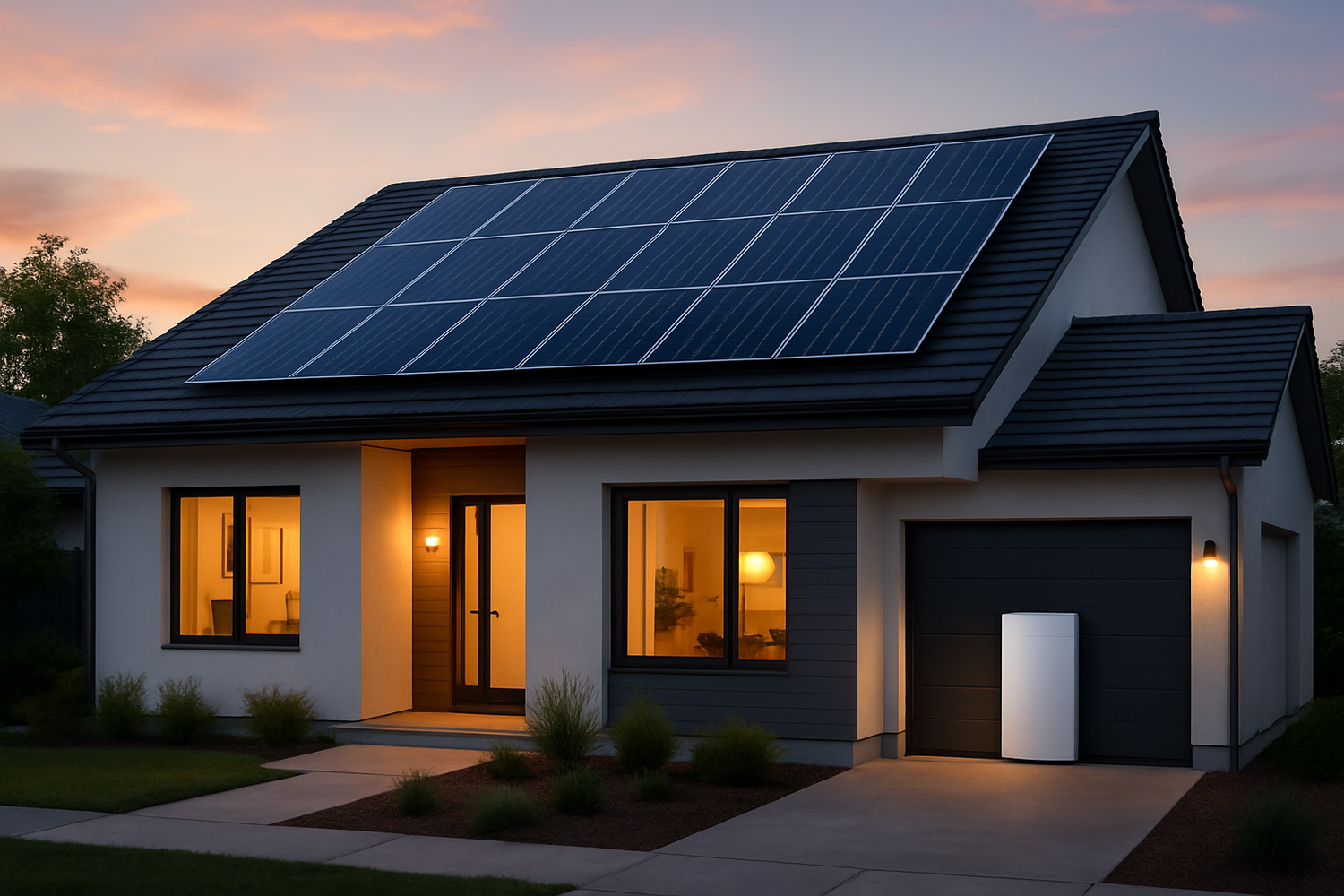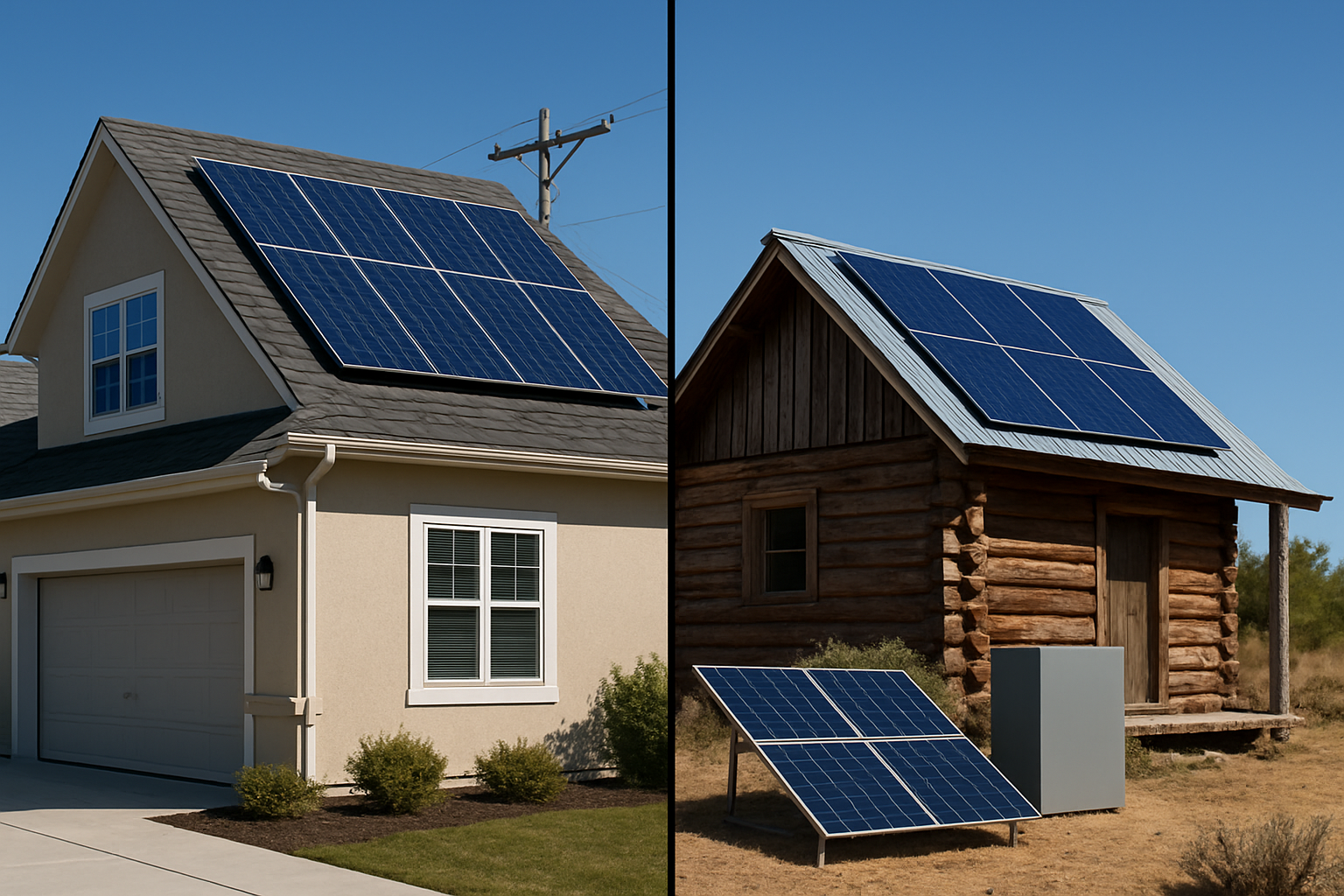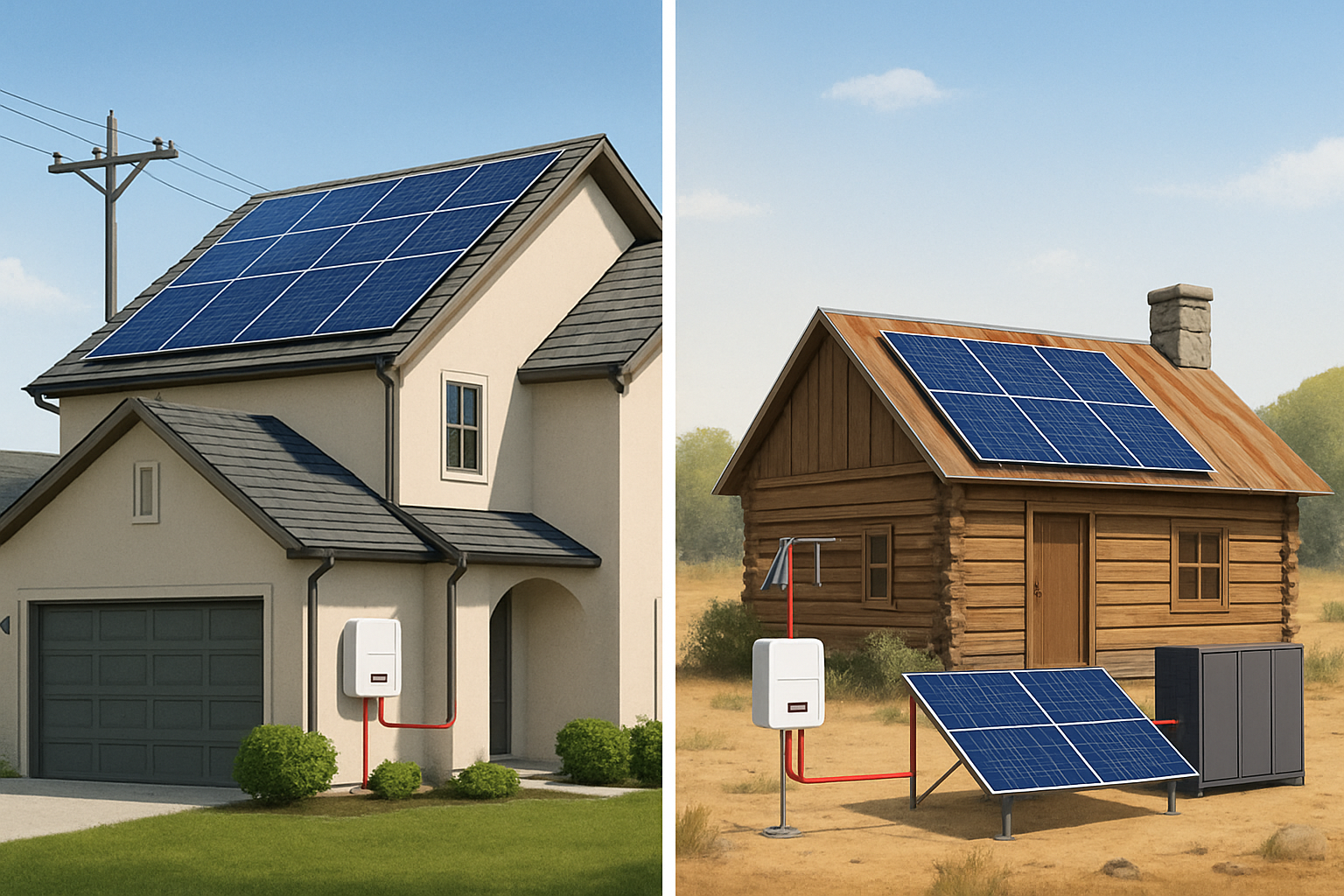The desire for energy independence is growing. Having a stable, self-sufficient power source offers peace of mind and control over your energy costs. Home battery storage is the technology that makes this possible. This guide examines the two primary paths to energy self-sufficiency: remaining connected to the grid with a battery backup or going completely off-grid. Understanding the differences will help you decide which approach aligns with your goals.
Understanding Your Connection: Grid-Tied vs. Off-Grid Systems
Your relationship with the local utility grid is the main factor that defines your solar energy system. You can use the grid as a backup, or you can sever ties with it completely. Each option has distinct operational principles and benefits.
What is a Grid-Tied System?
A grid-tied system connects your home's solar panel installation to the public electricity grid. During the day, your solar panels power your home. Any excess electricity you generate is sent back to the grid, and you may receive credits from your utility company through a program called net metering. When your panels aren't producing enough power, such as at night or on overcast days, you draw electricity from the grid. The primary limitation is that most standard grid-tied systems without a battery will shut down during a power outage for safety reasons, leaving you without power just like your neighbors.
What is an Off-Grid System?
An off-grid system is entirely independent of the utility grid. You generate 100% of your own electricity with solar panels and store it in a home battery storage system. This stored energy powers your home when the sun isn't shining. This setup provides complete immunity from grid outages and eliminates monthly electricity bills. According to the International Energy Agency (IEA), advancements in solar and battery technology are making off-grid solutions more viable for remote communities and individual homes seeking resilience. An off-grid system requires a significant upfront investment in panels, batteries, and often a backup generator for prolonged periods of poor weather.
The Hybrid Approach
A hybrid system combines the features of both grid-tied and off-grid setups. You remain connected to the grid but also have a home battery storage system. This configuration offers great flexibility. You can store excess solar energy in your battery for use during peak-rate evening hours or to power your home during a grid outage. You get the reliability of the grid with the security of battery backup, providing a balanced solution for many homeowners.
The Core Component: Home Battery Storage
Regardless of whether you choose a hybrid or a fully off-grid system, the battery is the central component that enables energy storage and independence. It acts as your personal energy reservoir, giving you access to solar power on demand.
Why Batteries are Crucial for Energy Independence
Solar panels only produce power when the sun is shining. Without a battery, that energy must be used instantly or sent to the grid. A battery captures this energy, allowing you to power your home at night, during cloudy weather, or when the public grid fails. For an off-grid system, a robust battery bank is not optional; it is the only way to have power 24/7. The U.S. Energy Information Administration (EIA) reports that residential battery storage capacity is rapidly increasing, underscoring its growing role in modern energy management.
Key Battery Technologies: LiFePO4
Not all batteries are created equal. Lithium Iron Phosphate (LiFePO4) has become a leading chemistry for home energy storage. LiFePO4 batteries offer a superior combination of safety, longevity, and performance compared to older technologies. They have excellent thermal stability, reducing the risk of overheating. They also boast a long cycle life, often capable of being charged and discharged thousands oftimes with minimal degradation. This durability makes a 12v 100ah LiFePO4 lithium battery or a larger 48V LiFePO4 battery a reliable foundation for a long-lasting energy storage solution.
Sizing Your Battery System Correctly
Properly sizing your battery system is critical for success, especially in an off-grid scenario. An undersized system will leave you without power, while an oversized one results in unnecessary expense. Sizing involves calculating your daily energy consumption (in kilowatt-hours), determining your peak power demand, and deciding on the number of 'autonomy days' you need—the number of days your system can run without any solar input. This calculation ensures your lights stay on even during extended cloudy periods.
Financial and Lifestyle Considerations
Choosing between an off-grid and a grid-tied system with battery storage involves more than just technical specifications. It requires a careful look at the costs, potential savings, and necessary lifestyle adjustments.
Analyzing the Costs: Upfront Investment vs. Long-Term Savings
The financial picture for each system type varies significantly. Off-grid systems command the highest initial investment due to the need for a larger solar array and battery bank to ensure 100% reliability. Grid-tied systems with batteries have a more moderate upfront cost. The long-term savings for an off-grid system come from the complete elimination of electricity bills. For a hybrid system, savings accumulate through reduced grid consumption and optimizing energy use to avoid peak utility rates. The falling cost of solar and storage technologies, as documented by organizations like the International Renewable Energy Agency (IRENA) in reports such as Renewable Power Generation Costs in 2022, continues to improve the financial case for both options.
| Feature | Grid-Tied with Battery (Hybrid) | Off-Grid System |
|---|---|---|
| Initial Cost | Moderate to High | Very High |
| Electricity Bills | Reduced, but grid connection fees may apply | Eliminated |
| Grid Outage Protection | Yes | Yes (Immune to grid outages) |
| Energy Independence | Partial to High | Complete |
| System Complexity | Moderate | High (Requires careful management) |
| Best For | Homes in areas with unreliable grids or high electricity rates | Remote properties or those seeking total energy sovereignty |
Lifestyle Adjustments for Off-Grid Living
Living off-grid is a commitment. It requires a conscious awareness of your energy consumption. You become your own utility manager, which means monitoring your battery's state of charge and adjusting your usage based on the weather forecast. For example, you might run high-power appliances like a dishwasher or laundry machine in the middle of a sunny day when solar production is at its peak. This mindful approach to energy use is a significant lifestyle shift but one that many find rewarding.
Making the Right Choice for Your Home
The final decision rests on your specific circumstances, including your location, budget, and personal goals for energy resilience.
Assessing Your Location and Needs
Start by evaluating your situation. Is your local grid prone to frequent outages? If so, a hybrid system with battery backup could provide immense value. Are you building a home in a remote area where extending grid infrastructure would be prohibitively expensive? An off-grid system is the logical solution. Do you simply want to maximize your use of clean energy and reduce your carbon footprint? A hybrid system allows you to do that effectively while maintaining the convenience of a grid connection.
Evaluating System Performance and Reliability
The long-term reliability of your system depends on the quality of its components and its design. High-performance solar panels, a durable LiFePO4 battery pack, and a capable solar inverter are all essential. Understanding how these components work together is key to building a dependable system. For those interested in the technical details, a detailed breakdown of the ultimate reference for solar storage performance can provide deeper insights into what to expect from your investment. This knowledge helps you evaluate different products and ensure you select a solution built to last.
A Forward Look at Energy Independence
Deciding to invest in a home battery storage system is a significant step toward managing your own energy future. The choice between a hybrid and a fully off-grid system is not about which is universally better, but which is better for you. It's a balance of budget, location, and your desire for autonomy. With advancements in lithium battery technology, achieving a high degree of energy independence is more accessible than ever. Both paths offer a way to secure your power supply, reduce reliance on an aging grid, and utilize clean, solar energy on your own terms.
Frequently Asked Questions
How long do home batteries last?
The lifespan of a home battery is typically measured in cycles. High-quality LiFePO4 batteries, a type of lithium ion solar battery, are often rated for 6,000 to 8,000 cycles or more, which can translate to a lifespan of 15 years or longer depending on usage patterns. This makes them a durable and long-term investment for any home energy storage system.
Can I add a battery to my existing grid-tied solar system?
Yes, in most cases you can add a battery to an existing solar installation. This process is called AC coupling. It involves installing a battery and a compatible multi-mode inverter that can manage the flow of energy between your solar panels, battery, home, and the grid. It's best to consult with a qualified installer to ensure component compatibility.
What happens in an off-grid system if there are several cloudy days?
An off-grid system is designed for this scenario. During the design phase, the battery bank is sized to provide a certain number of 'autonomy days'—typically three to five. This means your fully charged batteries can power your home for several days with no solar input. For extra security in locations with long, dark winters, many off-grid systems also incorporate a backup generator that can automatically start to recharge the batteries if they reach a low level.





Leave a comment
All comments are moderated before being published.
This site is protected by hCaptcha and the hCaptcha Privacy Policy and Terms of Service apply.